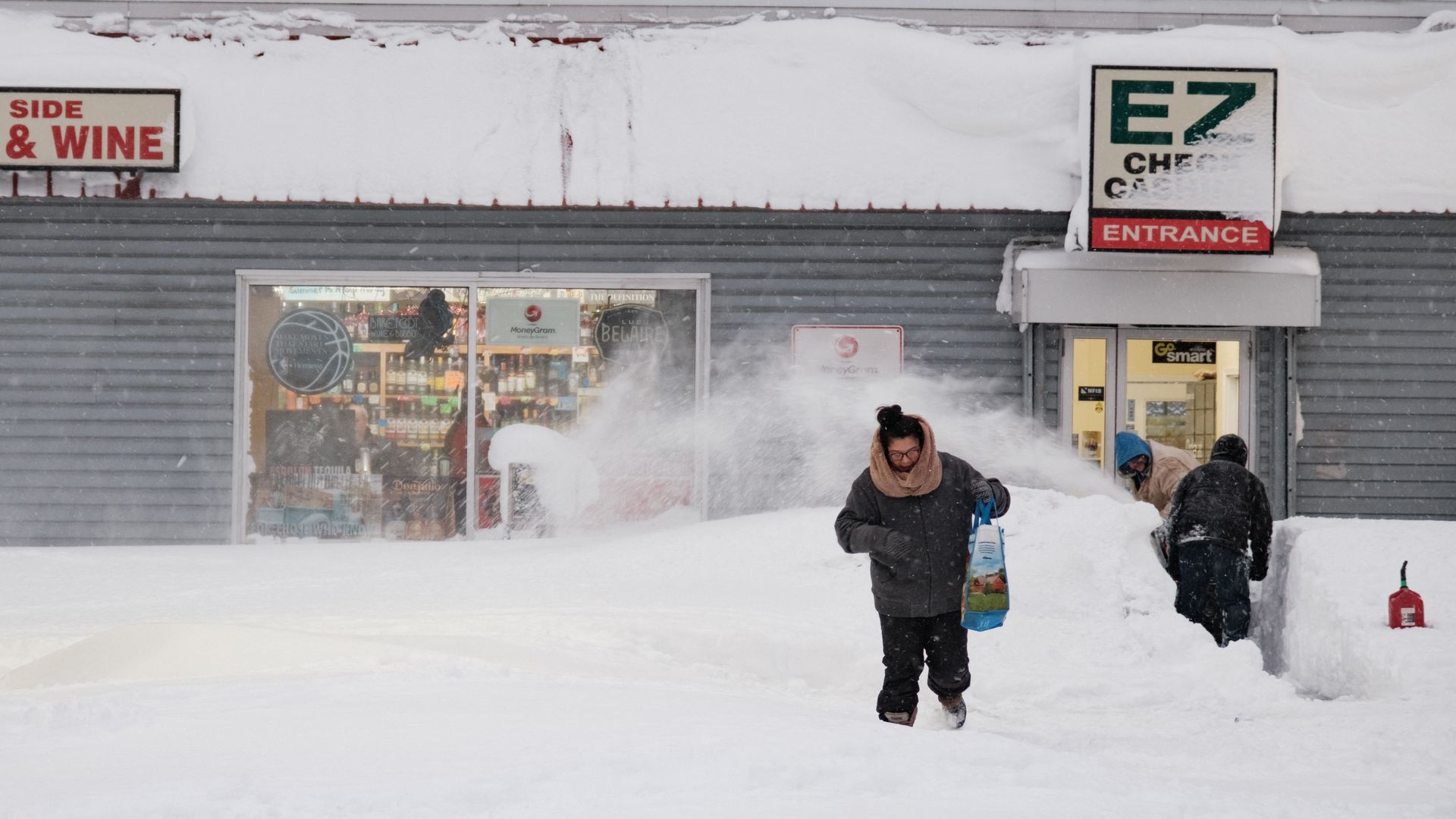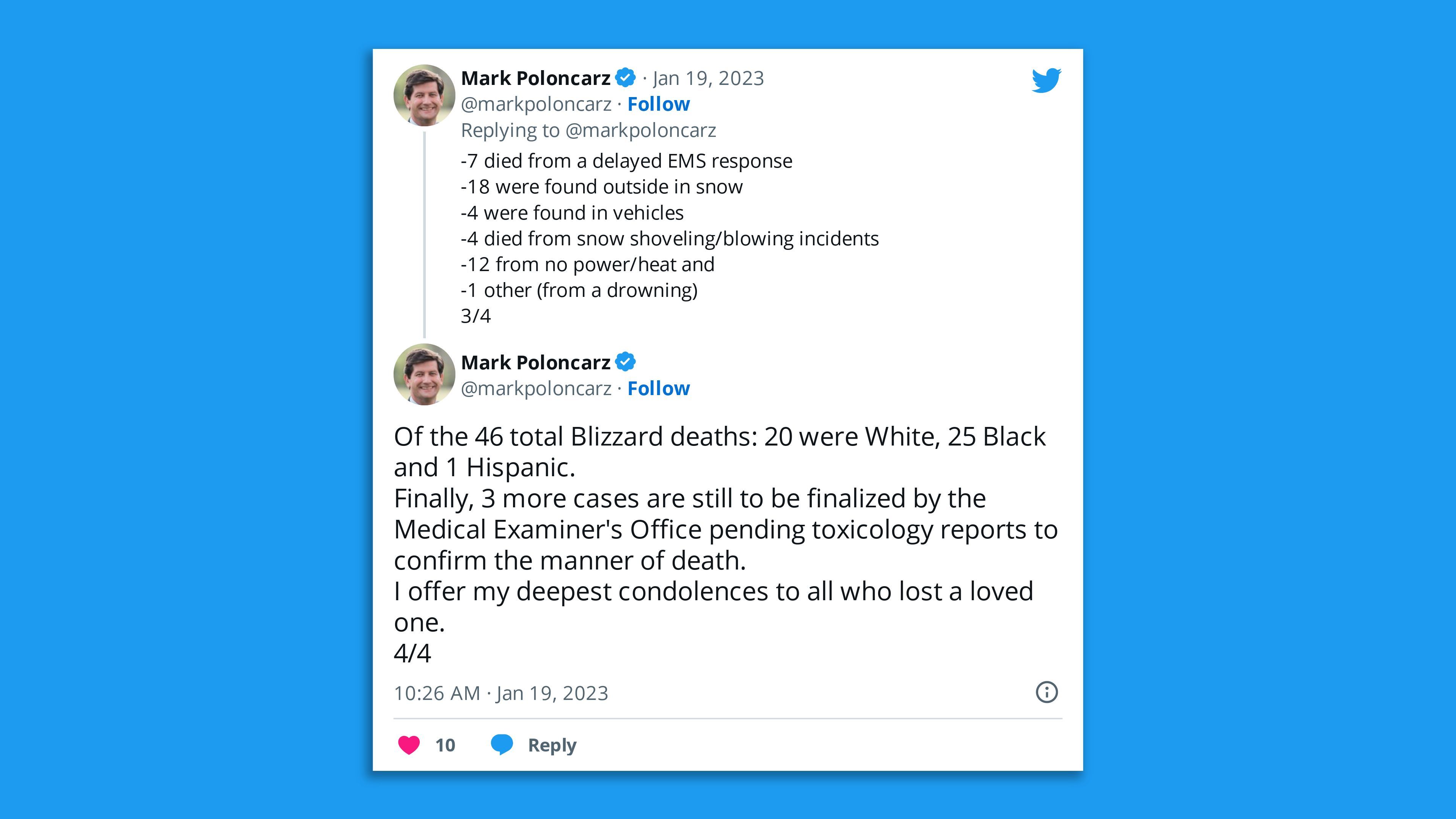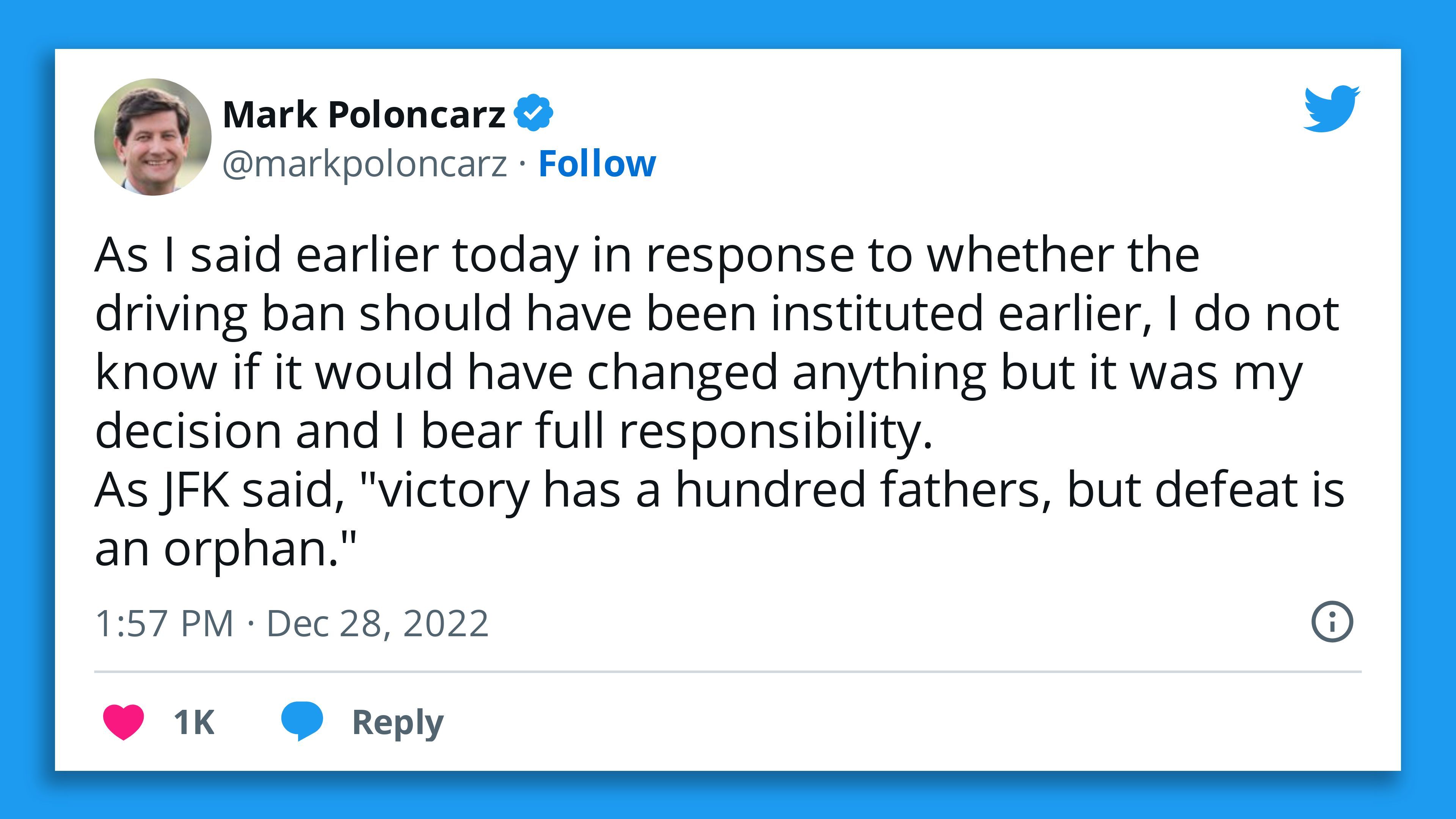Death toll in historic Buffalo blizzard rises to 47 amid emergency response delays

The scene at one of the few grocery stores open in Buffalo, New York, on Dec. 26 during the historic winter storm. Photo: Joed Viera /AFP via Getty Images
The death toll in the Buffalo blizzard has risen to 47 after Erie County officials confirmed on Thursday that three more people had lost their lives during the destructive winter storm.
Driving the news: Erie County executive Mark Poloncarz tweeted that they died after cardiac events that were witnessed by others, but emergency responders were unable to reach them in time due to the historic blizzard.

What we’re watching: The storm death toll could still rise as the medical examiner was awaiting toxicology results in order to confirm the causes of three deaths, per Poloncarz.
The big picture: Buffalo bore the brunt of what New York Gov. Kathy Hochul described as “the most devastating storm” in the city’s history, as it froze several substations and created hazardous conditions during the busy holiday travel period.
- In addition to the 46 people who died in Eerie County, one person was found dead in the Niagara County town of Lockport of suspected carbon monoxide poisoning.
Between the lines: What made this extreme weather event so dangerous for Buffalo, a city that’s used to heavy snow, were the days of extremely strong winds, frigid temperatures and heavy snow, per Axios’ Andrew Freedman.
- Some residents questioned Eerie County officials storm preparation plans after officials issued a travel advisory to go into effect at 7am on Dec. 23 ET, but the travel ban didn’t go into effect until 9.30am the next morning — as the blizzard was already under way.
- Many wanted the travel ban to be implemented earlier and the Washington Post reports there have been ongoing demonstrations over Buffalo’s “emergency preparedness processes, budget, and its lack of participation in the county’s planning.”
Of note: New York’s second-largest city has gone for years without an official emergency manager, whose job it is to create “procedures for responding to natural disasters and other emergencies” and lead and help coordinate the response, according to WashPost.
- Vinny Ventresca, the president of Buffalo Professional Firefighters Local 282, said at a Buffalo Common Council meeting Tuesday that the city’s fire commissioner, William Renaldo, who was given these responsibilities in lieu of an emergency manager, was away on vacation at the time of the storm, per WBFO.
What they’re saying: Local officials defended their actions. Buffalo Mayor Byron Brown told the Washington Post late last month “everything that could have been done in the lead-up to the storm, and during the storm was done.”
- Renaldo told lawmakers when he appeared before the Common Council’s Community Development Committee on Tuesday that the city was well-equipped ahead of the storm and rejected the firefighters’ union’s claims that equipment was old and worn and had hampered their efforts, according to the Buffalo News.
- “On the apparatus and equipment side, we activated all four of our alternative response vehicles in anticipation of a higher-than-normal volume of EMS calls,” Renaldo said.

Editor’s note: This article has been updated with comment from the Buffalo fire commissioner, the president of the Buffalo Professional Firefighters Local 282 and the city’s mayor, along with additional context.

Comments are closed.